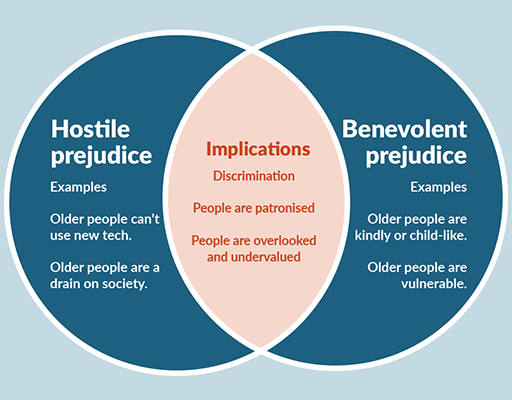1.1.3 Implications
Watch this short video produced by the World Health Organisation’s campaign to combat ageism.
The video focuses on the personal impact of stereotyping and prejudice based on age. You may have similar experiences in terms of how you have felt or how you have thought about another person.
Having considered stereotypes and prejudice and looked at some examples we can conclude that the society and culture we live in sometimes makes it easy to stereotype others without much thought on the consequences it can have.
The negative impact of ‘hostile’ prejudice is generally more obvious, but ‘benevolent’ prejudice is also damaging, perhaps more subtly so. Benevolent stereotypes and prejudices may seem harmless, perhaps even kind, but can mean older people can be seen as 'not up to the job' or 'incompetent'. They can also lead to assumptions that it is 'natural' for older people to have lower expectations, reduced choice and control with less account taken of their views.

